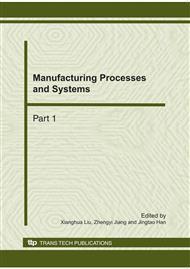p.633
p.640
p.644
p.649
p.653
p.659
p.664
p.668
p.674
Numerical Approach in Predicting the Formation Process of Tandem Explosively Formed Projectile
Abstract:
In order to find a proper resolution scheme for the formation process of tandem Explosively Formed Projectile (EFP) from shaped charge with double liners (SCDLL). 2D hydrocode was used to study the formation and penetration of SCDLL impelled by detonation products. The simulation is conducted to compare the effect of the following three resolution techniques on the prediction of velocity and shaped of EFP: Lagrangian, Eulerian-Lagrangian Coupling and Eulerian. In the simulation, shaped charge with one high explosive and two liners, ignited at the center point is studied. The results obtained from simulations are compared to experimental X-ray pictures. The simulation results including the Lagrangian resolution applied on liners agree well with experimental results when the friction coefficient between two liners is set to 0.28. The study results can provide important reference for engineers to analyze and design the tandem EFP.
Info:
Periodical:
Pages:
653-658
Citation:
Online since:
October 2010
Authors:
Price:
Сopyright:
© 2011 Trans Tech Publications Ltd. All Rights Reserved
Share:
Citation:


